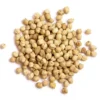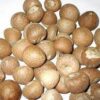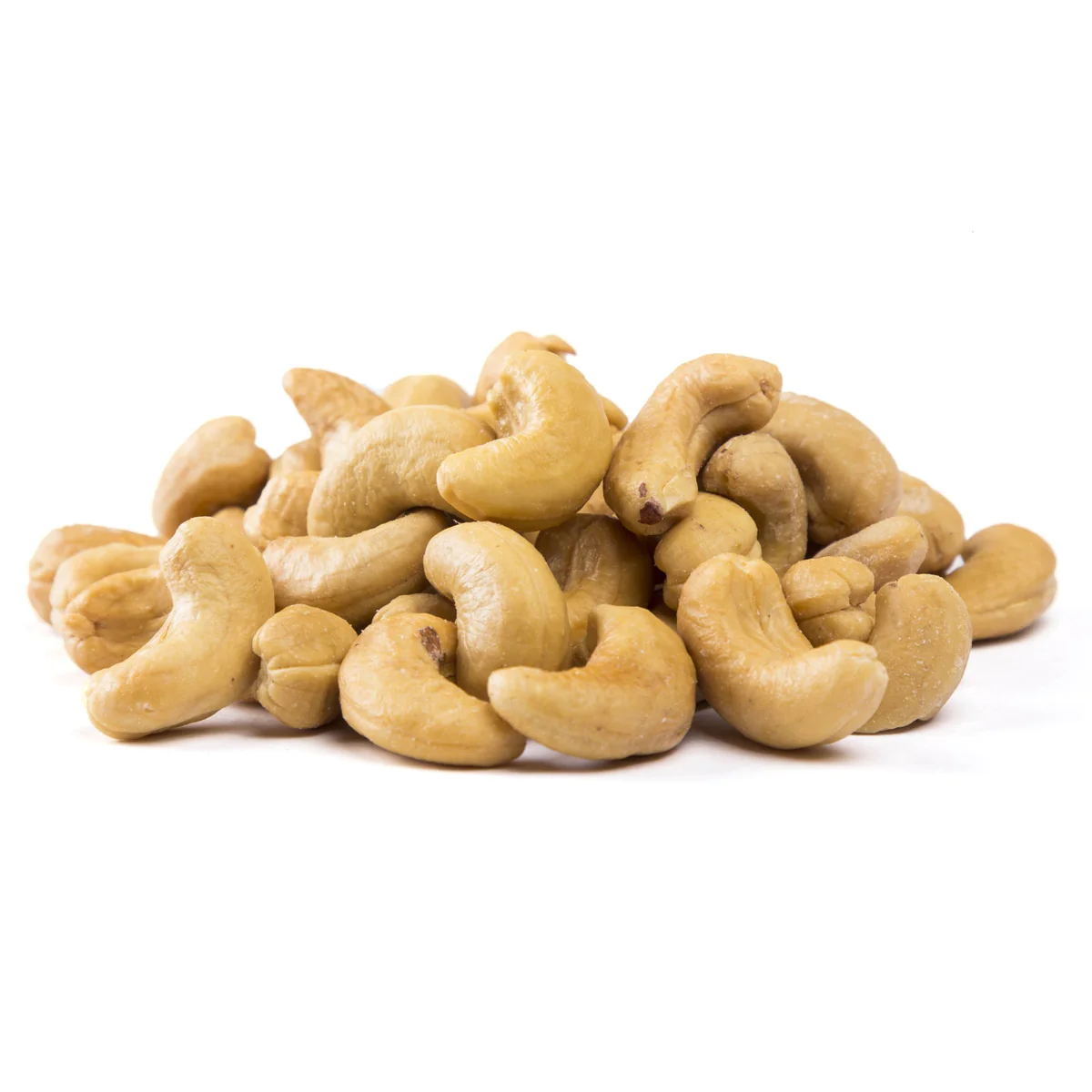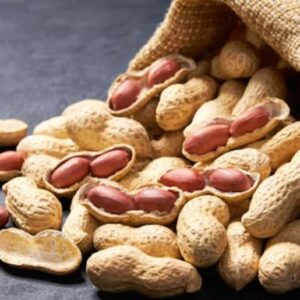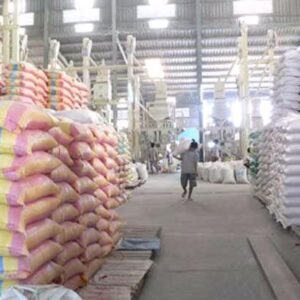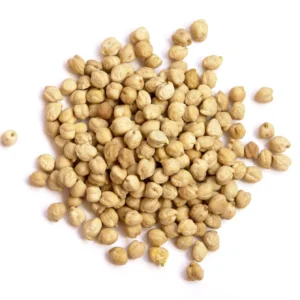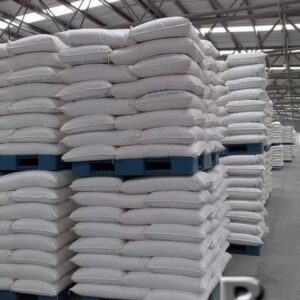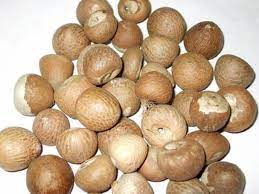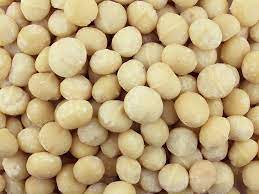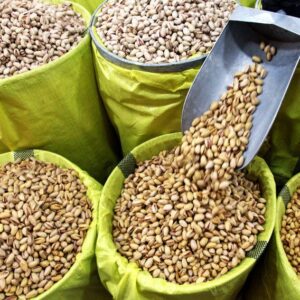The cashew tree is large and evergreen, growing to 14 metres (46 feet) tall, with a short, often irregularly shaped trunk. The leaves are spirally arranged, leathery textured, elliptic to obovate, 4–22 centimetres (1+1⁄2–8+3⁄4 inches) long and 2–15 cm (3⁄4–6 in) broad, with smooth margins. The flowers are produced in a panicle or corymb up to 26 cm (10 in) long; each flower is small, pale green at first, then turning reddish, with five slender, acute petals 7–15 millimetres (1⁄4–5⁄8 in) long. The largest cashew tree in the world covers an area around 7,500 m2 (81,000 sq ft) and is located in Natal, Brazil.
The fruit of the cashew tree is an accessory fruit (sometimes called a pseudocarp or false fruit). What appears to be the fruit is an oval or pear-shaped structure, a hypocarpium, that develops from the pedicel and the receptacle of the cashew flower. Called the cashew apple, better known in Central America as marañón, it ripens into a yellow or red structure about 5–11 cm (2–4+1⁄4 in) long.
The true fruit of the cashew tree is a kidney– or boxing-glove–shaped drupe that grows at the end of the cashew apple. The drupe first develops on the tree and then the pedicel expands to become the cashew apple. The drupe becomes the true fruit, a single shell-encased seed, which is often considered a nut in the culinary sense. The seed is surrounded by a double shell that contains an allergenic phenolic resin, anacardic acid—which is a potent skin irritant chemically related to the better-known and also toxic allergenic oil urushiol, which is found in the related poison ivy and lacquer tree.
Cashews are commonly used in South Asian cuisine, whole for garnishing sweets or curries, or ground into a paste that forms a base of sauces for curries (e.g., korma), or some sweets (e.g., kaju barfi). It is also used in powdered form in the preparation of several Indian sweets and desserts. In Goan cuisine, both roasted and raw kernels are used whole for making curries and sweets. Cashews are also used in Thai and Chinese cuisines, generally in whole form. In the Philippines, cashew is a known product of Antipolo, and is eaten with suman. The province of Pampanga also has a sweet dessert called turrones de casuy, which is cashew marzipan wrapped in white wafers. In Indonesia, roasted and salted cashews are called kacang mete or kacang mede, while the cashew apple is called jambu monyet (lit. ‘monkey rose apple’).
In the 21st century, cashew cultivation increased in several African countries to meet the demands for manufacturing cashew milk, a plant milk alternative to dairy milk. In Mozambique, bolo polana is a cake prepared using powdered cashews and mashed potatoes as the main ingredients. This dessert is popular in South Africa.
553 Calories –
| Nutrient | Amount(g) | DV(%) |
| Total Fat | 44 g | 67% |
| Cholesterol | 0 mg | 0% |
| Sodium | 12 mg | 0% |
| Potassium | 660 mg | 18% |
| Total Carbohydrate | 30 g | 10% |
| Protein | 18 g | 36% |
| Percent Daily Values are based on a 2,000 calorie diet. Your daily values may be higher or lower depending on your calorie needs. |

